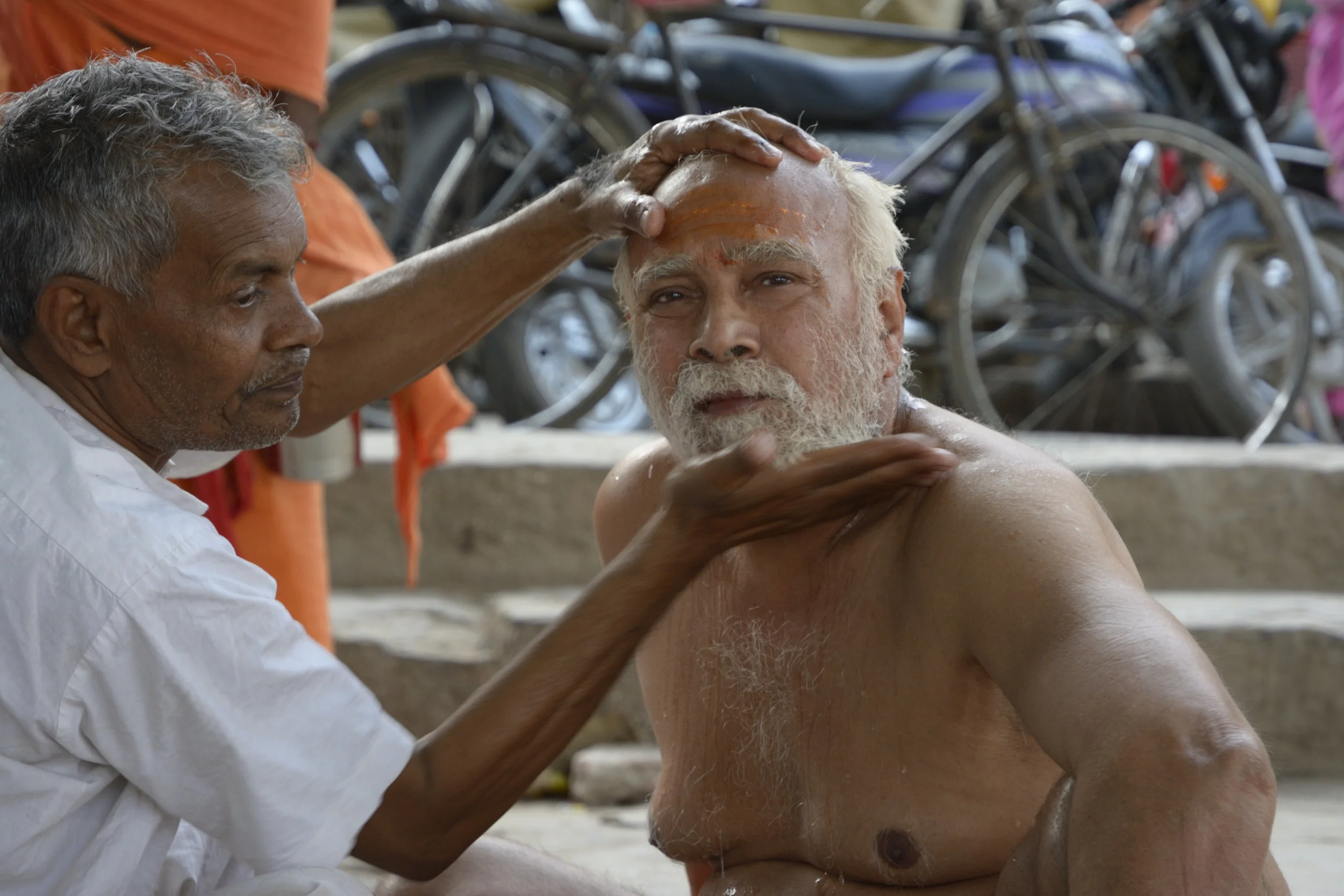"Tenderness is the byproduct of the recognition of our oneness. Tenderness follows the direct experience that there is no other. We can’t force the experience of love. We can’t make it happen. We can only allow it to be the residual effect of recognizing and knowing the intimacy of our shared being."
Text by Caverly Morgan. Photos by Vineet Teames.
The silence is profoundly silent.
Perhaps it’s simply because I trained at a silent Zen monastery for eight years that silence is the context in which stillness feels most easily accessible to me. That’s not the case for my husband. He grew up in a large family and lived and practiced at a colorful ashram in which devotion is vividly expressed – often loudly – from the perspective of an ex-monk.
He can sleep anywhere and doesn’t flinch at the thought of meditating in the midst of bhajans over loud speakers and lots of movement. I watched him sleep in an Indian rickshaw that was dodging traffic so severely that I found myself holding on for survival. Apparently the grasping wasn’t needed. We both came out of the trip fine – only one of us was more rested.
For me, silence opens space for a wordless conversation with life that can be more difficult to access in the midst of noise.
And now here I am. Beloved dogs at my sides. Husband still in California. Silence abounds. Enveloped in stillness. Held.
It’s a particularly loud silence given the contrast of where we’ve been. While in India, not only did I grow accustomed to not having silence around me, I grew used to not having physical space. To be in this home – that I can’t, in good conscious, call ‘mine’ – for in this moment the concept of ownership seems absurd, is like being on an island. Not because I feel removed from the world, but because there’s nothing but space and silence extending in all directions. And because the house feels enormous, though by Western standards it is not.
In the stillness, tenderness arises. Tenderness for this body – I returned home ill. Tenderness for the love in the reunion with my four legged friends. Tenderness for the lives who have touched mine and who now, physically, are far away.
In the heart, they couldn’t be closer. These lives – lives that, may not even know that they’ve made such an impression – are swimming through me. Arising. Dancing. Dissolving.
It’s not that they are merely a memory now. It’s clear that it’s a fallacy to think that simply because we can no longer see something, we can no longer be present to it. Presence would be narrow if it could only attend to what is seen. Much more is possible.
Awareness does not exist as a single point in time and space.
It overwhelms the ego, the small illusory self, that awareness isn’t ‘mine.’ That it doesn’t belong to ‘me.’ (Me being this body/mind.) In fact, the ego can’t grasp that and spends its (apparent) existence fighting that truth. From the perspective that awareness is ‘mine,’ I can attend to what is in front of ‘me.’ (Again, ‘me’ in this context being this body/mind). It’s the perfect subject/object relationship. It’s controllable. Manageable. Tangible. Right?
For the ego, it is. For the heart, it’s absurd.
In the heart, all these lives that I’ve made reference to arise in this larger Me – this open, vast field of Awareness. These impressions, these experiences, they all appear and disappear in Me.
The honking horns of busy streets. The chickens in cages by the butcher’s block. Cows on concrete. Women in colorful silk saries hovering above dirt and shit. The laughter of children in school uniforms. The tears of a girl who has just met her new husband – about whom she had no choice.
Sweet little Sakshi and her family who took us in –- the first foreigners in their neighborhood –- and treated us like royalty. The frail old ladies wearing earmuffs because the temperature has dropped to 85 degrees Fahrenheit. All of this arises in Me. All of this is known by Me.
In this intimacy of knowing comes understanding. A deep tenderness for all that is You – this vast open field of Awareness. Of which nothing is excluded. From this recognition, acceptance of what is, is not a practice – it is the reality of the nature of Awareness itself.
The intimacy of our communal being is love. With love comes tenderness. Tenderness for the shop-keeper who works hard all day while her husband drinks. Tenderness for the man who has traveled for days from Delhi to have one timeless moment in his guru's embrace.
Tenderness for the twelve-year-old girl who wears a red band around her arm because her parents say it wards off evil. Though it is mere superstition to her, when asked about it she says, “It is my duty to please my parents and if this pleases them, I am happy.”
Tenderness is the byproduct of the recognition of our oneness. Tenderness follows the direct experience that there is no other. We can’t force the experience of love. We can’t make it happen. We can only allow it to be the residual effect of recognizing and knowing the intimacy of our shared being.
And so here, this morning, in silence, I bow to the shining and brilliant souls who have reminded me of this shared being. All who have opened the door to the remembrance of our oneness through their generous spirits and open hearts. You, beautiful beings of a continent now far away, couldn’t be closer to me in the stillness of the heart.
Thank you for your love. Thank you for your being. I see each of your faces so clearly in Me. Every face, the face of God.


































